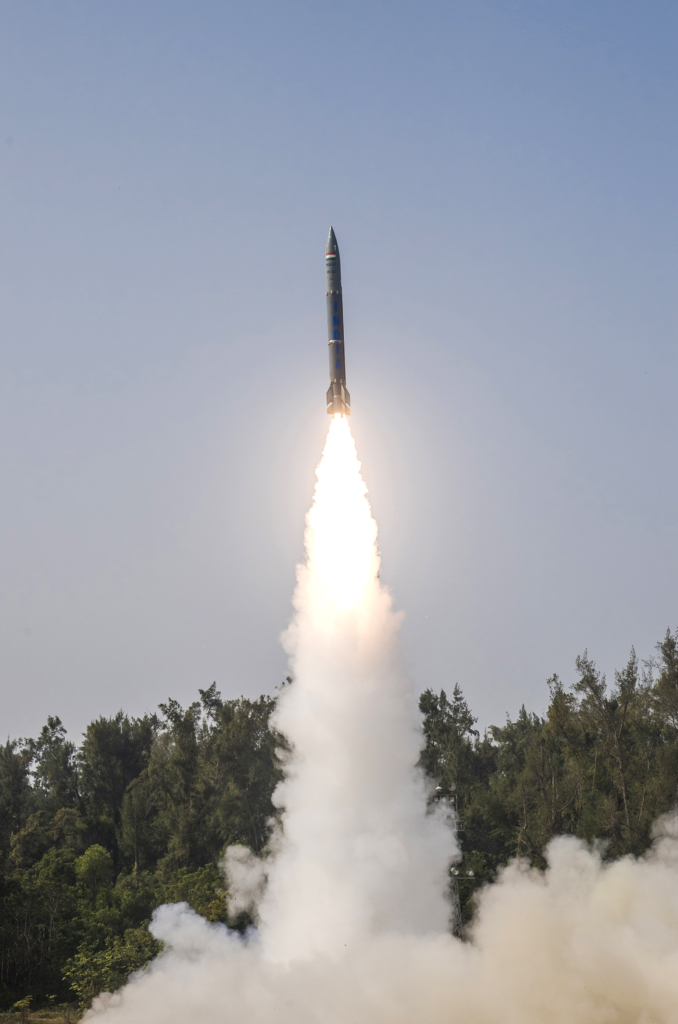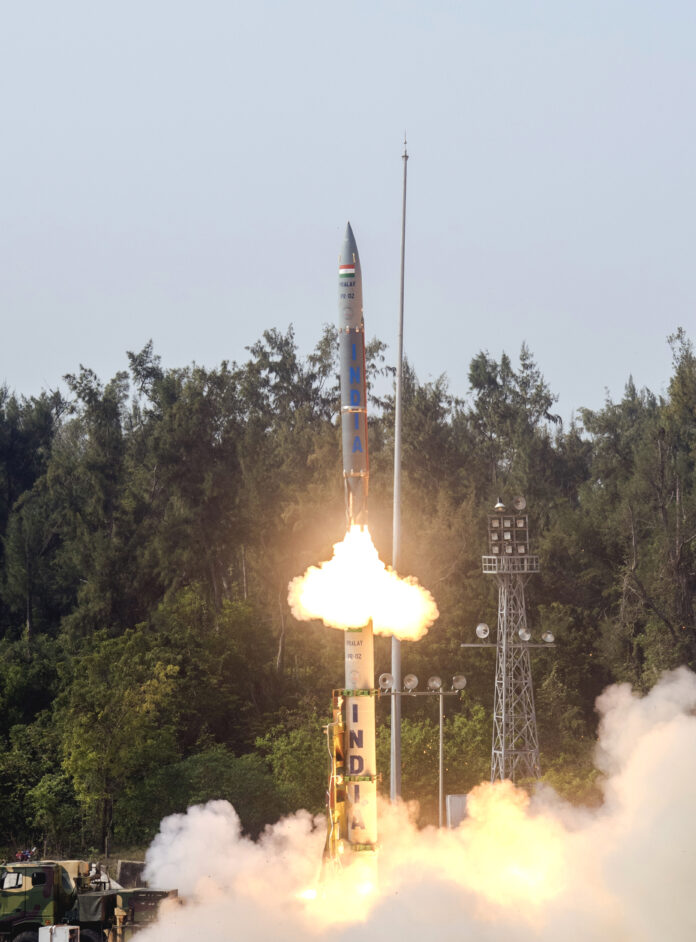Defence Secretary Rajesh Kumar Singh announced on Monday (January 20) that the indigenously developed tactical missile ‘Pralay,’ capable of carrying conventional warheads, will be showcased at this year’s Republic Day parade on Kartavya Path. Singh also confirmed that the Advanced Light Helicopter (ALH) Dhruv will not participate in the January 26 flypast, citing its grounding as a “minor setback.”
Singh shared that the 90-minute-long parade will feature 31 tableaux—16 representing states and 15 from central ministries. In addition to the military’s participation, the event will have an expanded cultural dimension, with performances by 5,000 tribal artists showcasing India’s rich heritage.
The ‘Pralay’ missile, a short-range surface-to-surface weapon system with a range of 150 to 500 km and a payload capacity of 500-1,000 kg, will be among the indigenous platforms on display at the Republic Day parade this year. This missile, designed to carry conventional warheads, underscores India’s advancements in domestic defence capabilities.
India’s growing emphasis on indigenisation and self-reliance in defence manufacturing has produced yet another breakthrough: the ‘Pralay’ missile. Designed as a tactical, surface-to-surface short-range weapon, it is a reflection of India’s evolving defence strategy in an increasingly complex geopolitical landscape.
Here’s everything you need to know about this cutting-edge weapon system.
What is Pralay Missile?
‘Pralay’ – as in doom in the literal sense is a name justified by its capacities even if it is in the short range. A short-range surface-to-surface tactical missile developed indigenously by India’s Defence Research and Development Organisation (DRDO), it is designed to deliver precision strikes with conventional warheads, making it a crucial addition to India’s arsenal. These features collectively position it as a pivotal weapon in India’s tactical arsenal, capable of striking decisively and maintaining a strategic edge in modern warfare.
- Payload Capacity: 500-1,000 kilograms.
- Range: 150 to 500 kilometres, offering significant flexibility in operational scenarios.
- Warhead Type: Capable of carrying conventional warheads, providing a strategic edge in precision strikes without crossing the threshold into nuclear warfare.
Pralay’s development reflects India’s response to regional threats and the need for rapid retaliation capabilities during conflicts.
Features and Capabilities of Pralay
High Mobility: Pralay is mounted on mobile launch platforms, allowing it to be transported and deployed quickly in diverse terrains, from mountainous regions to open plains, This means that it can be used in areas of importance like Ladakh as well. This mobility ensures that it can be positioned strategically and becomes harder for adversaries to track or neutralise. Unlike fixed launch sites, mobile platforms enhance operational flexibility, which enables the missile to be rapidly moved to counter emerging threats or respond to dynamic battlefield conditions. This feature makes Pralay particularly valuable in high-stakes, time-sensitive scenarios where rapid deployment is crucial.
Speed and Precision: Equipped with advanced inertial navigation and guidance systems, it achieves pinpoint accuracy even at its maximum range of 500 kilometres. These systems utilise cutting-edge algorithms and real-time data to ensure minimal deviation from the intended target. Such precision reduces collateral damage and makes the missile ideal for targeting high-value enemy installations, such as command centres, ammunition depots, and air defence systems. The combination of speed and accuracy ensures that Pralay can neutralise critical threats before they can retaliate or regroup.
Resilience Against Defences: Pralay is engineered with advanced countermeasure systems to evade enemy missile defence networks. Its design incorporates features such as trajectory shaping, which enables it to take unpredictable paths, and high-speed propulsion, which reduces interception time. These attributes make sure that the missile remains effective even in contested environments where adversaries have robust air and missile defence systems. This resilience enhances its survivability and makes it a reliable asset in both offensive and defensive operations.
Strategic Significance of Pralay
Pralay fills a crucial gap in India’s tactical arsenal, allowing for rapid strikes across borders. It complements systems like the BrahMos cruise missile and the Agni series, creating a layered missile defence and attack strategy. As an indigenously developed weapon, Pralay aligns with India’s “Make in India” initiative, reducing dependence on foreign suppliers and promoting defence exports. Its development positions India as a key player in the global defence industry, capable of producing advanced missile systems.
The induction of the Pralay missile marks a pivotal moment in India’s military modernization, signalling a sharper, more agile approach to defence in a region fraught with tension. With its range spanning 150 to 500 kilometres and pinpoint accuracy, the missile is tailored for precision strikes on critical enemy assets—command centres, ammunition depots, and supply lines—crippling adversarial operations without the risks of broad-scale collateral damage. For India, it’s beyond merely a weapon; it’s a statement of intent, showcasing its ability to conduct targeted, high-stakes operations while adhering to the principles of restraint.
Pralay’s significance, however, extends beyond its tactical capabilities. In a neighbourhood where geopolitical fault lines run deep, the missile strengthens India’s deterrence posture, offering a potent conventional response to aggression. Unlike weapons designed for nuclear warfare, it is firmly within the conventional domain, providing India with the latitude to escalate or de-escalate conflicts as needed. It gives New Delhi a powerful lever to manage crises without crossing the nuclear threshold, a critical factor in a region shadowed by the threat of miscalculation.

Image Credit: DRDO
What sets the missile apart is its role in bridging the gap between tactical and strategic warfare. Its range blankets key stretches of hostile terrain, ensuring adversaries remain within striking distance. Yet, it’s not just about reach—it’s about choice. In arming itself with Pralay, India reinforces its ability to respond with precision and proportionality, a move that’s as much about defence as it is about shaping the region’s strategic calculus. At a time when India seeks to redefine its military doctrine for the 21st century, Pralay is less a missile and more a harbinger of a nuanced and modernized security paradigm.
Operational Deployment
While the exact deployment details of Pralay remain classified, reports suggest it will be integrated into India’s armed forces for both offensive and defensive operations. The Army and Air Force are likely to benefit from its capabilities, particularly in forward areas where quick mobilisation is critical.



